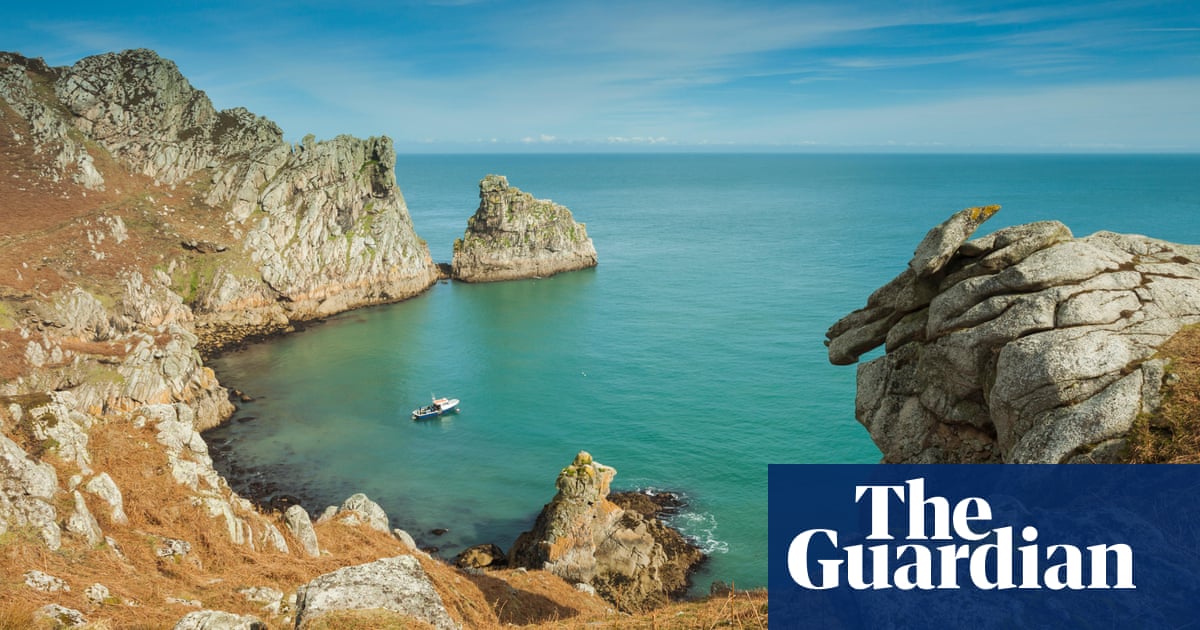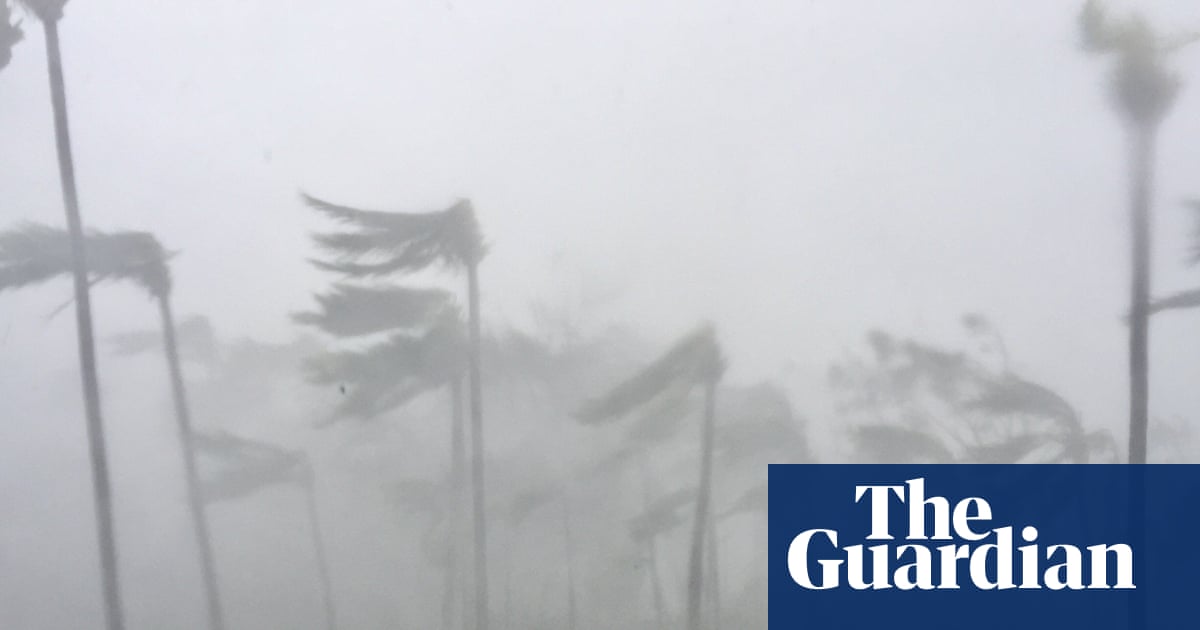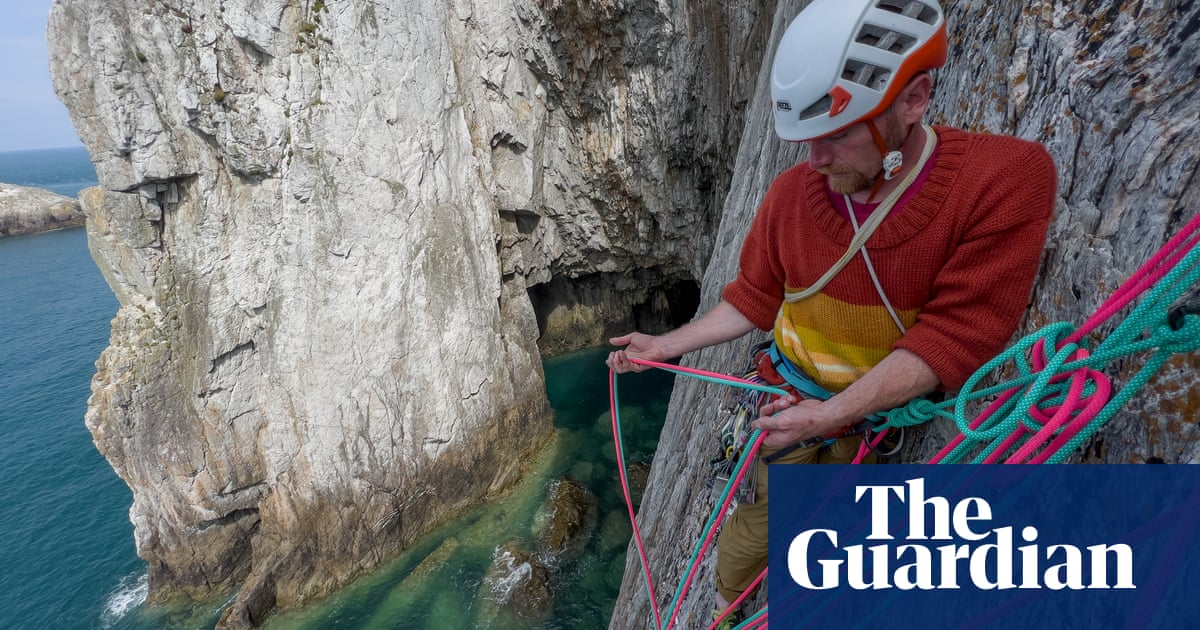
Adventure may be created by taking risks, or it can be brought on by the unexpected. Like when you book four days on the island of Lundy, 11 miles off the coast of north Devon in the Bristol Channel, and hare down there in time for the ferry, only to be told: “It’s cancelled. High winds.”
We didn’t have a back-up plan, let alone camping equipment. I had been focused on two things: snorkelling in Britain’s first marine protected area (established in the 1980s), then climbing one of the country’s all-time great routes, the Devil’s Slide. It features in Ken Wilson’s book Classic Rock, having first been conquered in 1961 by Rear Admiral Keith Lawder. The pictures show a vast slab of granite rising obliquely from the waves and heading skywards with a rather nasty-looking upward curve at the finish.
Lundy does have plenty of other attractions, like being out of mobile phone reach and frequently cut off by storms. It also has species found nowhere else on Earth. I would love to say it’s a colourful type of hummingbird or a giant lizard with a poisonous bite, but actually it is the Lundy cabbage, plus two tiny beetles that enjoy eating the Lundy cabbage. The cancelled ferry was a blow, but more for missing the Devil’s Slide plus snorkel safari, rather than the cabbage.
Without accommodation and in torrential rain, we sat in the cafe at Westward Ho!. Even the surfing looked impossible: great gnarly gnashers smacking themselves into the shingle. Neither my daughter Maddy nor I fancied that. Meanwhile, my wife Sophie had found a place to stay: Henry and Ania’s Artist Barn in the deep dingles behind Clovelly. It was perfect, a spacious and stylish space where we could dry out. Ania is a jewellery maker and laid on an impromptu, and fascinating, workshop in ring-making. In the evening I lit the log burner, got the maps out and tried to plan.
The swim and hike
If I couldn’t get to Lundy, I decided, I would walk in sight of it, around Hartland Point, which sits like Britain’s knobbly kneecap, facing the Atlantic. We made our way to Hartland Quay, a few miles south of the point, where there is a rocky promontory, a hotel and a huddle of people in changing robes threatening to get in the sea. How they managed to build a quay here in the 16th century is a mystery. By the 1890s it had been torn down by the waves and now there are only great jutting scars of rock, boiling in surf, and a little slipway, dropping steeply into a small area of relatively quiet water. It’s only possible to swim safely at high tide, but we had arrived at the right moment so jumped in. After that I set off on what must be one of the UK’s finest cliff walks, a path that loops over high promontories, then dips briefly into lonely bays.
Lundy was there on the horizon, drifting in and out of rain squalls. I rounded Hartland Point and the mood changed. Sheltered by the point, there are scraps of steamy rainforest, and cliffs often a bit tumbledown. The National Trust plants the field margins with wildflowers, and there were clouds of bees and butterflies. Sophie joined me for the last three miles to Clovelly, the template for the idyllic English coastal village with its cobbled street so steep that the locals use sledges to pull their shopping home.
We moved out to Hartland and stayed at Karina and Jeff Griffin’s remarkable set of geodesic domes on Loveland Farm, enjoying the newly arrived piglets and indoor swimming pool, and eating at Hartland’s excellent Kings Arms. A night later we were on the move again, heading back down the coast to Bridge Cottage, a thatched Landmark Trust heirloom in Peppercombe. This little dingle is filled with temperate rainforest. There’s even a fig tree growing wild, an escapee from a lost garden, and an isolated stony beach worthy of Robinson Crusoe.
Without phone signal, television or even radio, this place slows you down. I sit in the parlour reading in front of a driftwood fire while the storm rages: old guide books, tales of smuggling and piracy and William Cobbett, the first enemy of industrialisation who fought to preserve an English rural idyll that was dying all around him at about the time Bridge Cottage was built in 1830. His particular hatred was for the new-fangled fashion of tea-drinking, a vice that he attacked as the root of all evil, calculating the time and money wasted with all the vehemence that one day would be reserved for social media.
The climb
Down on the beach I pick up a signal and learn that the Lundy boat will sail on Tuesday. A day trip is possible, though the tides will make it a short visit. By nine that morning we are on the Ilfracombe pier and meet Justin Nicholas, a climbing guide, who has agreed to a hectic attempt on the Devil’s Slide. The two-hour voyage out is perfect. Dolphins escort us.
Lundy’s position in the Bristol Channel has given it a long and colourful history. Barbary pirates are said to have used it in the early 17th century. A notorious Bideford merchant, Thomas Benson, signed contracts to ship convicts to America, but dropped them on Lundy to save a few bob. More recently Soay sheep, Highland cattle and ponies were shipped in, and still roam the grassy summits. Unfortunately rats and rabbits also arrived, and demolished the seabird colonies. By 2006, however, the rats were gone and seabird populations have soared, the puffin population going from single figures to over a thousand. Today the island is owned by the National Trust and managed by the Landmark Trust (accommodation options include cottages, camping and a dorm barn).
In glorious sunshine Justin and I reach the far west side of the island the most spectacular location for this special climb. We abseil 50 metres down to a ledge just above the water and start upwards. The Devil’s Slide is actually a test of balance. There are few holds but the granite is grippy. Johnny Dawes, the doyen of British rock climbing in the 80s, managed to do it without using his hands, but his sense of balance is legendary.
Justin and I move upwards, enjoying the vast seascape all around. A peregrine falcon stoops over our heads. The sun beats down and we lose all sense of time until we top out and I glance at my watch: it’s 3.17pm and the boat leaves at 4pm. So begins an adventure I really had not anticipated: the trail run across Lundy.
At the jetty a long line of people are waiting to board. Rosie, the island warden, says hello and hands me a mask and snorkel. “The queue takes a while to board. We’ve got five minutes.” It’s just a taste, but in that time I spot snakelocks anemones, comb jellies and compass jellyfish. I’m still wet when I jump on the ferry, swearing that I will return soon.












